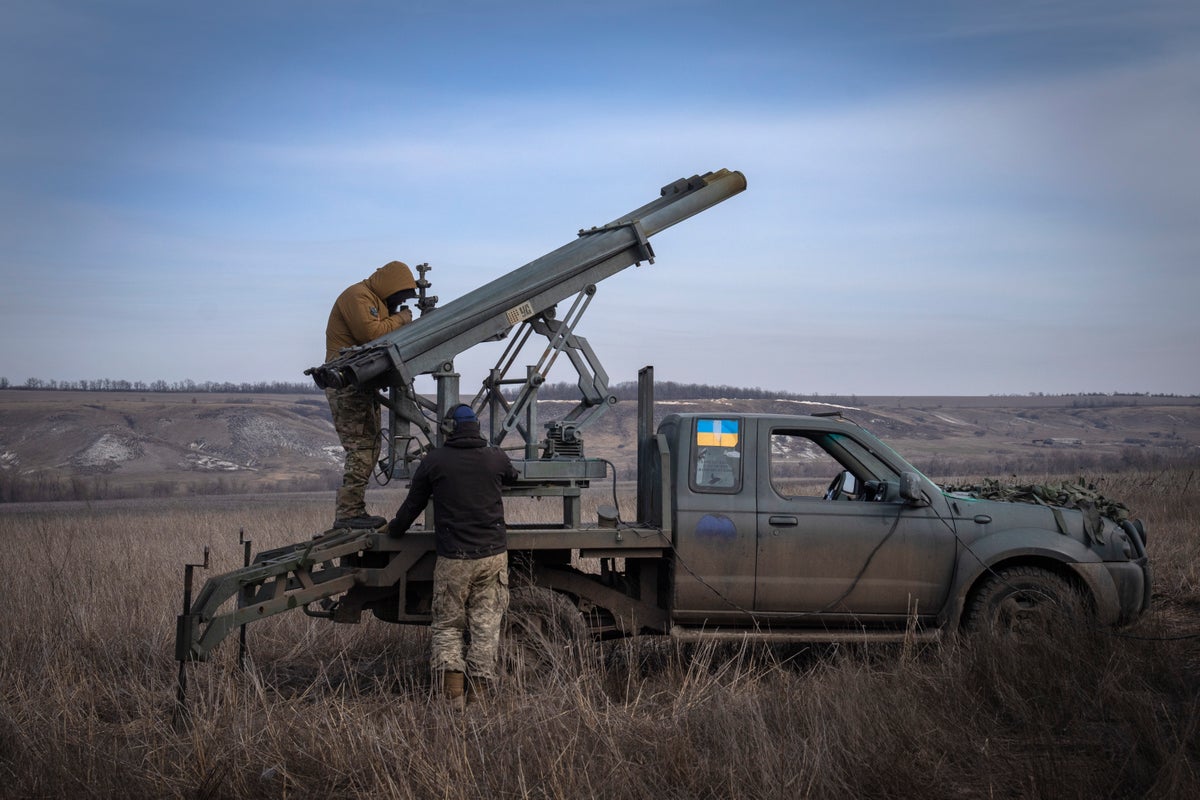
European Union leaders are considering a plan to provide long-term financial and military support to Ukraine, utilising hundreds of billions of pounds in frozen Russian assets held across Europe.
This initiative underscores the bloc’s resolve to independently bolster Kyiv’s defences, particularly as the United States, under President Donald Trump, has ceased financial aid to Ukraine and significantly reduced weapons provisions. Moscow has vehemently condemned the plan, branding it “theft.”
Ukraine’s budget and military requirements for 2026 and 2027 are estimated at approximately €130 billion (£111 billion). The EU has already committed €174 billion (£149 billion) since the conflict began in February 2022.
The largest portion of readily available funds stems from frozen Russian assets, with around €194 billion (£166 billion) held in Belgium as of June.
Further substantial amounts are located in Japan, totalling approximately $50 billion (£39 billion), alongside lesser sums in the US, UK, and Canada.
The European Commission is developing a new “reparation loan” proposal, which would be secured by these frozen assets. However, agreement from all 27 member countries is required, and not all were on board ahead of Wednesday’s EU summit in Copenhagen.
Russia has issued stern warnings against the move. Kremlin spokesman Dmitry Peskov told reporters on Wednesday that the EU’s intentions “amount to plans to illegally confiscate Russian property — in Russian, we call it theft.”
However, commission President Ursula von der Leyen said that “we are not confiscating the assets, but we are taking the cash balances for a loan to Ukraine.” She told reporters that “Ukraine has to pay back this loan if Russia pays reparations.”
“Russia is the perpetrator. It has caused the damage, and it has to be held accountable,” von der Leyen said, and added that she thinks her team has found “a sound legal way to do this” and to get reluctant member countries onside.
‘Some legal questions’
In essence, EU countries would lend Ukraine around 140 billion euros ($165 billion). Kyiv would only refund the money once Russia pays significant war reparations to Ukraine for the massive destruction its war has caused.
Should Moscow refuse, the assets would remain frozen.
Danish Prime Minister Mette Frederiksen, who was hosting the summit in Copenhagen, said that the commission’s plan “is actually quite a good way forward.”
She added: “There are some legal questions that have to be asked and I’m confident that we will find a way through this. But the whole idea of using the frozen assets I think is a good idea.”
EU foreign policy chief Kaja Kallas declined to predict when the plan might be finalised. “It’s not supported by everybody yet, so there’s still a lot of work to do,” she told reporters. “But if we don’t take those assets into account then it’s on our taxpayers, that’s for sure.”
Differences to bridge
The European Central Bank has warned that seizing the assets themselves would damage the credibility of the euro single currency. Belgium is wary of making itself a target for Russia and is reluctant to act without clear support from its EU partners.
The EU’s executive branch believes that European governments will buy into the idea because it does not involve seizing the assets, and because many have diverted budget funds to defense spending and some, like France and Italy, are mired in debt.
Ideally, the loans would be covered under the EU’s next long-term budget. But should that avenue be blocked – Hungary has routinely vetoed EU support for Ukraine – it would have be done through national guarantees, and France in particular is hesitant.
French President Emmanuel Macron did cautiously welcome the plan, but underlined that “we need to remain a place that’s attractive and reliable, we Europeans. That means that when assets are frozen, we respect international law.”
Others were openly supportive. “Investing in Ukraine is an investment in European security as a whole,” Finland and Sweden wrote to their EU counterparts ahead of the summit.
“It is key that the loan to Ukraine is only to be repaid once Ukraine receives war reparations from Russia.”
Differences over the scheme
German Chancellor Friedrich Merz said last week that it was time “to apply an effective lever that will disrupt the Russian president’s cynical game of buying time and bring him to the negotiating table.”
“That requires the courage and confidence to set our own agenda, rather than merely react to his,” Merz wrote in an op-ed in The Financial Times newspaper. He said the loan “would secure Ukraine’s defense capabilities for several years.”
But in a sign of some of the differences countries have about the scheme, Merz underlined that the money must be used for military support, not economic aid.
Interest earned on the frozen assets is already being used to fund a loan program for Ukraine organised by the Group of Seven major world powers, and this would not be impacted by the plan.
